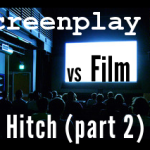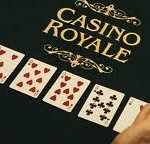We’re all familiar with the surgeon general’s warning slapped on cigarette packs.
Reducing the glamorous mystique unfortunately associated with smoking, it looks something like this:

Surgeon General’s Warning
The general’s words are a warning and a disclaimer. Hey buddy, this product has some negative qualities.
When we show the screenplay we’ve developed to a writer’s group (or even to a loved one who knows nothing about screenwriting), we often add our own disclaimers:

Screenwriting disclaimer #1

Screenwriting disclaimer #2

Screenwriting disclaimer #3
Tobacco companies use disclaimers to protect themselves from future lawsuits. When we’re in the process of developing a screenplay and sharing it with others, we also use them as protection from criticism.
And that’s not such a bad thing, although I’d argue that it’s better to hand over your work without any commentary. That will increase the odds you’ll get an evaluation from a fresh, unbiased pair of eyes.
Sometimes, however, we don’t use disclaimers for self-protection, but for self-sabotage.
The thought process goes something like this:
I’ve had a bad day. I’m tired and irritable. I’ve never done this before. I have no clue what I’m doing. My characters are so unoriginal. Everything I’ve written has been unoriginal. And everything I’m going to write today is going to be unoriginal…so why even bother?
Don’t allow this cycle of negative thoughts to psyche yourself out. Get them out of your head and onto paper.
That blank page you’re staring at with such reluctance?
Fill it with your disclaimers.
Every single one as they pop into your head.
Then you’ll witness the most amazing thing:
The disclaimers stop. They turn into something else.
Slugs. Vivid images. Clever dialogue.
Gold diggers of the prospecting variety (not the Heather Mills/K-Fed kind), had to mine a lot of ore to find gold. Likewise, you’ll have to slog through junky, uninspired pages before you hit your vein of golden screenplay goodness.
Die and Cigarette Pack by LaserGuided




















